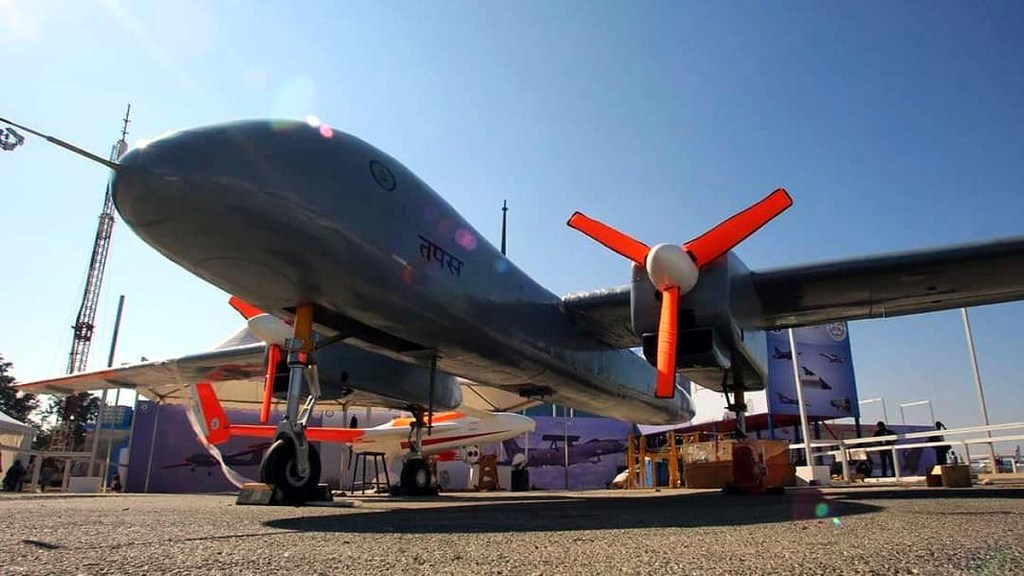Defence Research and Development Organisation (DRDO)’s unmanned aerial vehicle (UAV) crashed in agriculture fields near a village in Karnataka’s Chitradurga on Sunday morning.
“TAPAS UAV was undergoing an experimental flight trial today morning from ATR Challakere, Karnataka. During the flight, a technical snag was encountered and the UAV crashed in a nearby farmland. The technical reason is being investigated and there is no collateral damage,” DRDO posted on X, formerly Twitter.
The Tapas UAV is in the final stage of the developmental trials. The successful trials of TAPAS are crucial for India’s quest for indigenous military drones.
So far, for the user trials, DRDO with the Indian navy has already carried out the transfer of command-and-control capabilities of the TAPAS Unmanned Aerial Vehicle (UAV).
Why the successful trials of TAPAS are crucial for Indian armed forces?
The development of Tapas-BH
Tapas-BH is the answer to India’s quest for ISTAR (Intelligence, Surveillance, Target Acquisition, Tracking, and Reconnaissance) requirements.
TAPAS-BH is a Medium Altitude Long Endurance (MALE) UAV with an operating altitude of 30000 ft, and an endurance of 24 hours. In the past, TAPAS has successfully completed its maiden flight in November 2016 with an endurance of several hours at various altitudes.
TAPAS incorporate the highest-grade military EO Electro-Optical (EO) and Synthetic Aperture Radar (SAR) payloads. That will improve the images dramatically for the ISTAR range of operations for the military across the terrain.
TAPAS-BH also projects a range of 250 km which can carry a variety of payloads up to a maximum of 350 kg with a wing span of 20.6 metres.
The project is being developed by Bharat Electronics Limited (BEL), a leading Indian aerospace and defence company under the Ministry of Defence (MoD) with DRDO,. The project cost which was earlier estimated as Rs 1,786 crores in 2022 has increased to 1,540.74 crores according to the revised estimates.
Notably, at a later stage, DRDO will further open the scope of collaboration with Hindustan Aeronautics (HAL) alongside the BEL.
The TAPAS BH 201 unmanned aerial vehicle (UAV) is designed and developed in response to the tri-services Intelligence, Surveillance, Target Acquisition, Tracking, and Reconnaissance (ISTAR) needs.
The development of TAPAS is also crucial for the next phase of armed drones with greater capabilities which will reduce the dependency on importing ISTAR drones.
The long-endurance capabilities of drones are vital for border surveillance amid escalating Chinese build-up across the border.
“The effort will continue in this direction that we learn from the trials and build better. That is part of any such new development in terms of technology which goes into building a prototype,” said a senior DRDO official.
